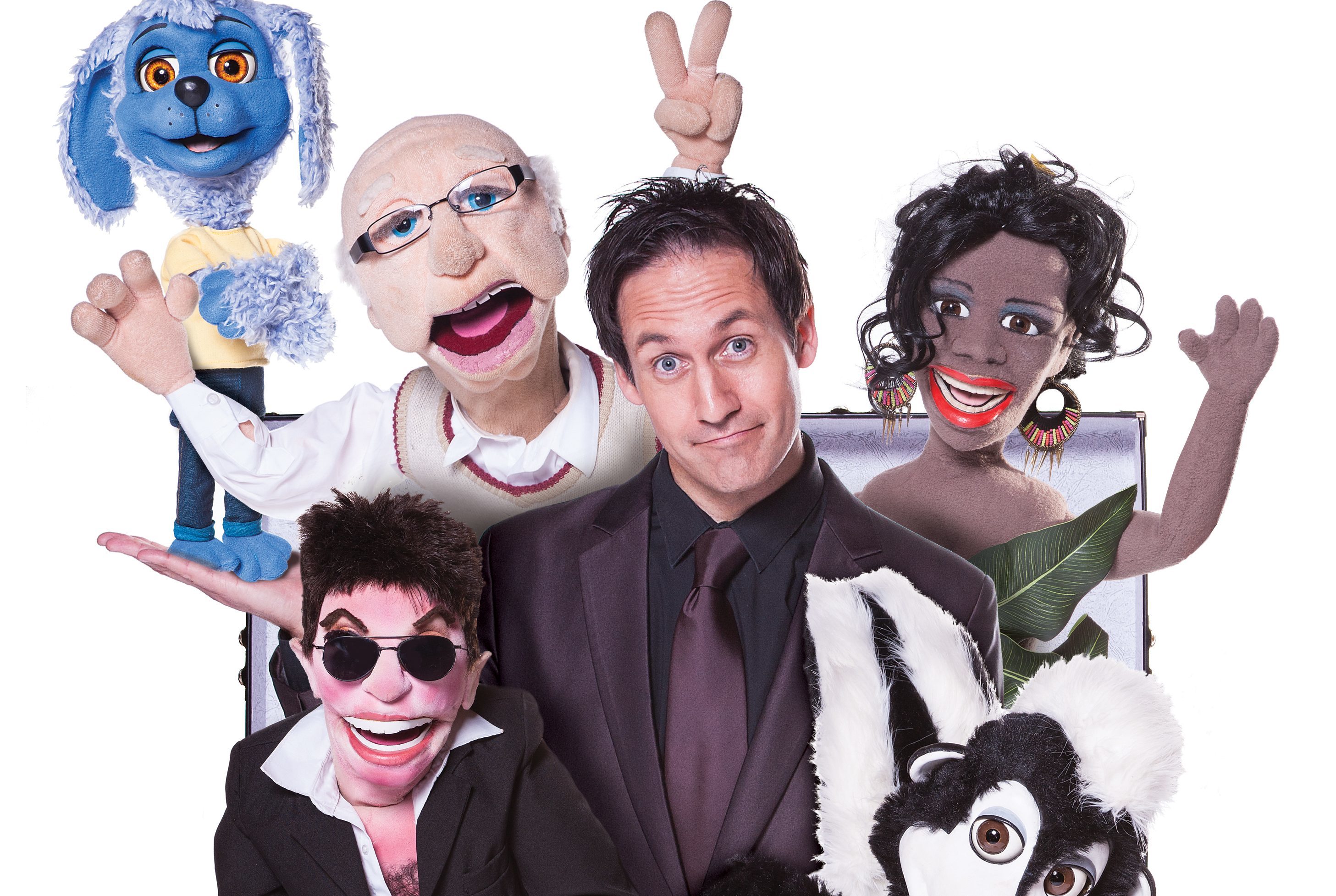
STEVE HEWLETT has much to thank Simon Cowell for.
No, not that Simon Cowell, but Steve’s somewhat-shorter version of the talent show mogul made out of foam rubber.
Steve’s Simon, you see, was one of the dummies that helped the ventriloquist reach the 2013 final of Britain’s Got Talent.
But, unlike some other “vent acts”, you won’t find Steve pampering Simon and his other characters such as Arthur Lager and Pongo the Skunk as if they were real.
“You get some ventriloquists who really look after their characters because they’re worth a lot of money, and you get some who just believe the characters are real and buy seats for them on planes!” laughs Steve, 40.
“A friend of mine worked on a cruise ship as a singer and there was an American ventriloquist who had a few days off.
“He gave my friend his cabin key and asked him to come in every day and switch the television on about four o’clock.
“He’d placed the dummy in front of the TV and seemed seriously worried the dummy wouldn’t get any entertainment.
“I said to my mate: ‘You didn’t do it, did you?’ and he said: ‘Yeah, I did.’ Why? Did he think the dummy would tell on him?”
Steve’s BGT success is part of a new wave of success for vent acts.
Acts that relied on people “throwing their voice” were big business when I was growing up — you couldn’t turn on the TV without seeing Keith Harris and Orville, Ray Alan and Lord Charles or Roger De Courcey and Nookie Bear.
But then things went quiet, until now.
“Ventriloquism is like a live cartoon crossed with a stand-up comedy act,” says Steve, who is currently writing a book about the history of the art.
“It works these days as the dummies are the stand-up characters and it’s thriving. I got my first write-up when I was 17 and it said: ‘No matter what happens, Steve will always be working’ and it’s been true.
“I’ve got a great passion for the art. I know where it’s been, where it’s going, when it went and when it is coming back.
“And it is coming back in a huge way, and I’m proud to have been part of that on Britain’s Got Talent.
“The interest is there again, partly because the stand-up comedy circuit’s not what it was over the last 20 years.
“They’re looking for new things and people like Nina Conti, Paul Zerdin, Jimmy Tamley and me, we’re updating our acts all the time.
“There’s also been a swing back to a more family-oriented style of entertainment.
“Keith Harris said to me: ‘We’re very blessed.’
“‘We can entertain a whole room, there’ll be little toddlers sat there with their mums, dads, teenage brothers and sisters, grans and grandads, and the whole family will be entertained as we’ll draw the adults in with our comedy, and our visual stuff with the puppets will entertain the kids.’”
Steve has been obsessed with ventriloquism since the age of 12 and cites Keith and American Ronn Lucas as his inspirations.
But he says: “When I started in 1987, there was a ventriloquist called Jimmy Tamley who won the grand final of New Faces, and I learned from him.
“Jimmy took me on the road for 10 years and he’s still one of the busiest ventriloquists in the country and he was staying with me just last week. We’re really close.
“I got to know Ray Alan and Roger De Courcey as well and I became friends with Keith Harris, who gave me loads of advice.
“I ended up being a pallbearer for Keith. After him being an idol and becoming a friend, it was an honour but also one of the saddest days.
“Keith was the master, he just knew how to entertain a crowd. Mums and dads knew Orville and they’d introduce him to their kids.
“And he’d do a lot of university and corporate gigs, introducing Orville and Cuddles the Monkey to a whole new audience, and people loved seeing them being cheeky.”
While the classic vent acts stuck with one or two dummies, modern acts often have a whole cast of characters.
“I’ve got about five or six which I’ll use on my next tour, but someone like Ray Alan only really had Lord Charles,” says Steve.
“Nowadays, I don’t think people would sit there and listen to the same character. You need to update everything and be innovative.
“Arthur Lager and Pongo are my main characters. Keith passed Pongo to me when I was 20 and I’ve held onto him and I use him at the end of every show, while Arthur usually starts.
“And everyone wants their photo taken with Simon Cowell!”
READ MORE
Lorraine Kelly: It’s a tough world even if you have the X Factor

Enjoy the convenience of having The Sunday Post delivered as a digital ePaper straight to your smartphone, tablet or computer.
Subscribe for only £5.49 a month and enjoy all the benefits of the printed paper as a digital replica.
Subscribe